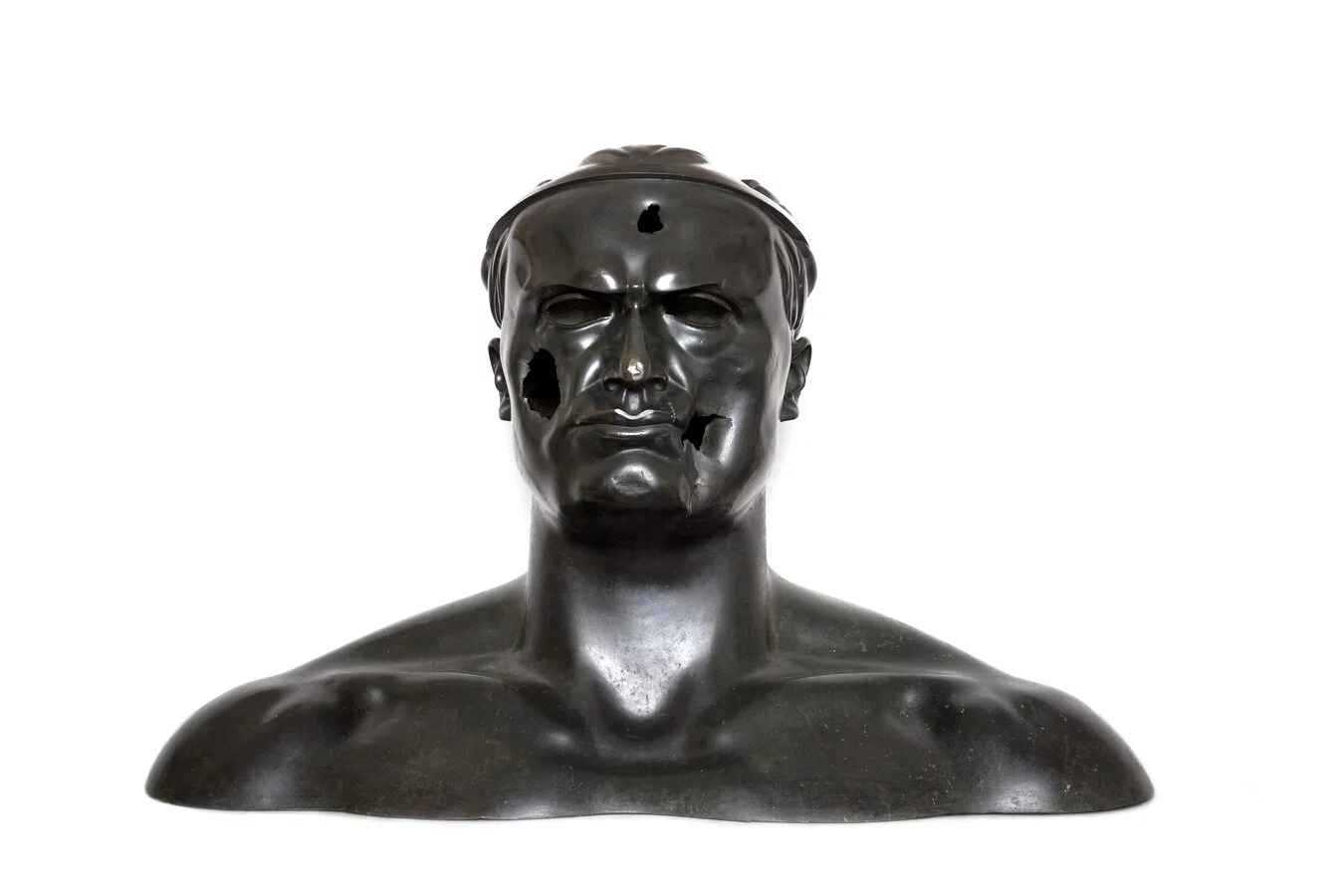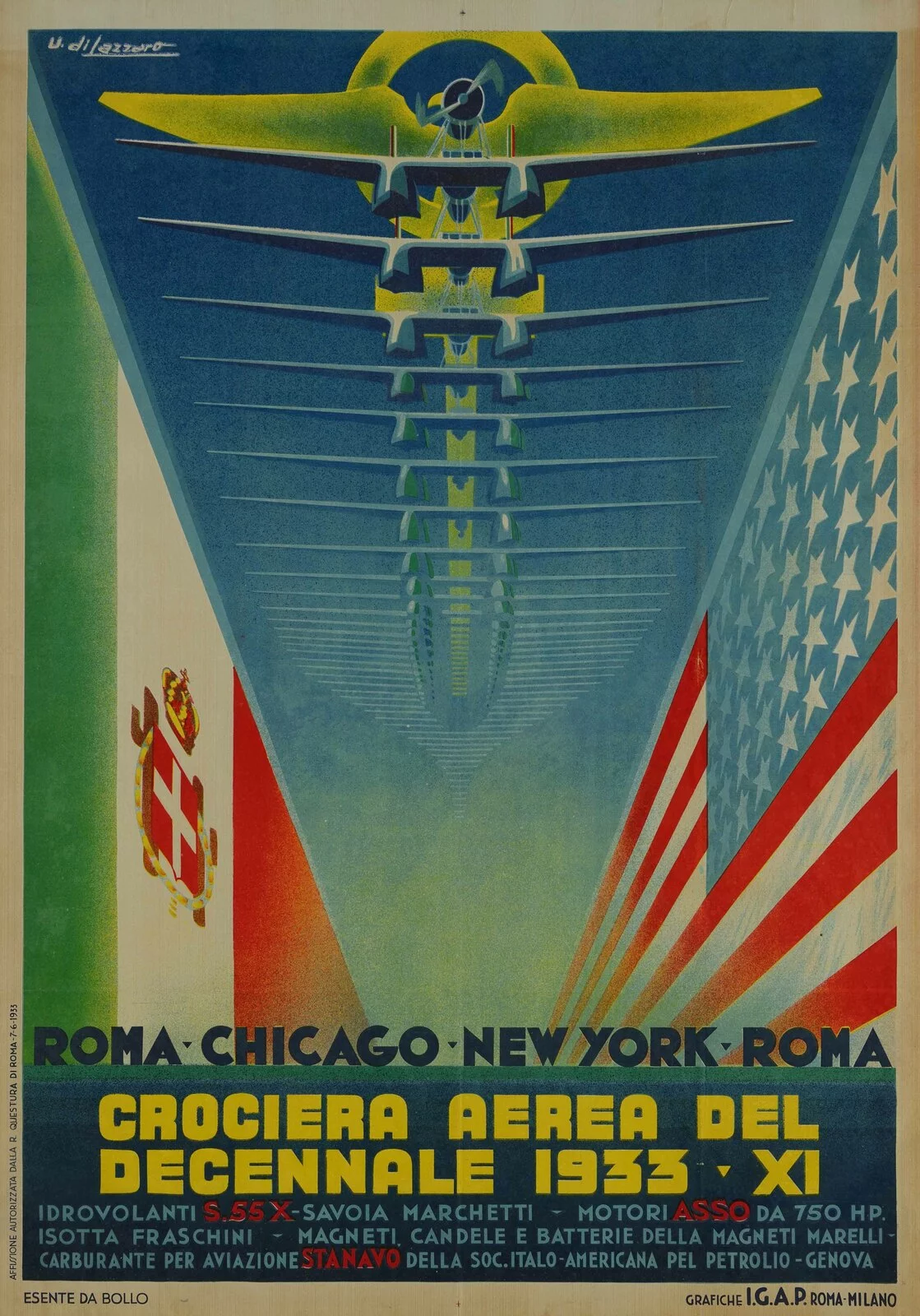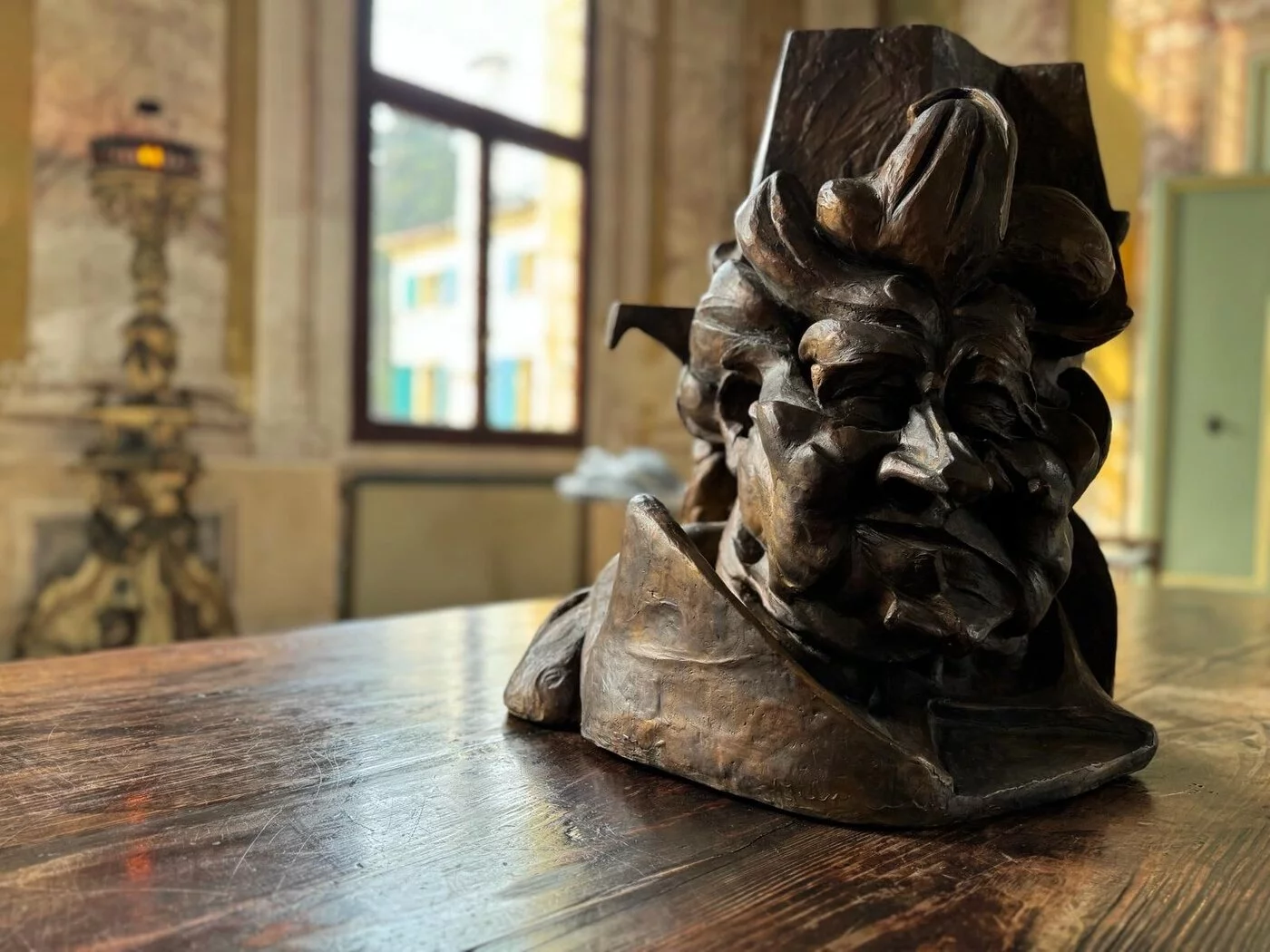Despite the artistic value of Futurism being overshadowed for years due to its association with Fascism, its critical reevaluation since the post-war period has allowed for a renewed appreciation of its innovative exploration of themes such as modernity and speed. This highlights the complexity and importance of this movement within the realm of twentieth-century art. Let's explore some recently inaugurated or upcoming exhibitions in the coming months that delve into various aspects of this extraordinary artistic era.
Art and Fascism at the Mart in Rovereto
The Mart, Museum of Modern and Contemporary Art of Trento and Rovereto, recently inaugurated the major exhibition 'Art and Fascism'. The exhibition analyzes the various complex ways in which the fascist regime influenced Italian figurative production, using the languages of art and architecture for propagandistic purposes. Among paintings, sculptures, documents, and projects, the exhibition showcases around 400 works by artists and architects such as Mario Sironi, Carlo Carrà, Adolfo Wildt, Arturo Martini, Marino Marini, Massimo Campigli, Achille Funi, Fortunato Depero, Tullio Crali, Thayaht, Renato Bertelli, and Renato Guttuso. These works, coming from both public and private collections, engage in dialogue with some of the great masterpieces of the Mart and numerous materials from the Archive of the 20th Century.
Within the exhibition, divided into eight thematic sections, an important space is dedicated to Futurism, which shares with fascism an interventionist and revolutionary drive. The relationship between Mussolini and Marinetti and the Futurist movement is complex and not always straightforward, marked by separations and returns, admiration, and detachment. Fascism and Futurism share the myth of action, interventionism, the aesthetics of war and mechanical means, especially airplanes, as well as the allure of science and technology. In the 1930s, the aeropainters and artists of the second season of the movement embraced the propagandistic needs of the regime, celebrating its ideals and even coining the term 'futurfascism.' However, the avant-garde failed to carve out a leading role in the cultural policy of the Fascist era, as evidenced by the modest quantity of Futurist works entering public collections and the limited involvement of artists such as Prampolini, Balla, and Depero in major state commissions.

Adolfo Wildt, Dux, 1923, Collezione privata
Remember that with the entrance ticket to the Mart, it is also possible to visit the Casa d'Arte Futurista Depero, the only museum founded by a Futurist - Depero himself, in 1957. Additionally, on Saturday, May 18, on the occasion of the International Museum Day, the Mart allows free admission to all its venues. In addition to the two locations in Rovereto, the Mart also includes the Galleria Civica Trento.
Tullio Crali: One of the Masters of Aeropainting
Until September 29, 2024, the exhibition titled 'Tullio Crali: A Life for Futurism' is presented at the Monastery of Santa Chiara in Gorizia, entirely dedicated to Tullio Crali (Igalo, Dalmatia, 1910 – Milan 2000), one of the protagonists of the second Futurism and among the greatest exponents of aeropainting. The exhibition, part of a series of initiatives of the 'GO!2025' path leading the city towards the designation as European Capital of Culture for 2025, represents the largest exhibition ever dedicated to Crali in Friuli-Venezia Giulia.
Artists who expressed themselves in this art form were inspired by the emerging technology of aviation and the speed of technological progress of their time. This movement was characterized by the representation of urban landscapes, aerial views, and views of cities or countryside seen from a perspective similar to that of a flying plane. Artists sought to capture the sensation of movement, dynamism, and speed through the use of diagonal lines, unusual perspectives, and vibrant colors.... read the rest of the article»
This exhibition also stands out for the presence of works from the period between 1919 and 1929, a crucial decade in which Julian Futurism was born and developed. Visitors will have the opportunity to admire paintings, drawings, and photos by important authors such as Čargo, Carmelich, Černigoj, Claris, Cossar, Demanins, Dolfi, Farfa, Fattorello, Mix, Pilon, Pocarini, Sanzin, Spazzapan, Stepancic, Vucetich, and Wulz. Some of these works, still little known to the general public, form a significant archive highlighting the importance of these artists in the context of regional and national Futurism. Learn more about the exhibition.
Futurism in Advertising Art
Part of a project conceived in two parts, the exhibition 'Paper Futurism - Imagining the Universe with the Art of Advertising' will remain on display at the National Museum Collezione Salce until June 30. The second part, subtitled 'Imagining the Universe with the Art of Advertising,' is dedicated to the years preceding the Second World War, when, between 1930 and 1940, Futurism reached the height of its development. Aeropainting, transposed into graphics, exalted flight and aviation exploits, the aerial view to reshape itself in approach to surrealism.
These are the years when the chronicles emphasize the solitary exploits of Italian aviators, the new popular heroes. Since the twenties, Italian wings have set records for speed, distance, altitude, becoming a testimony to the new state, a protagonist on the world stage. The propaganda of the fascist regime catalyzed national pride.
History remembers the Rome-Tokyo raid in which Arturo Ferrarin completed a flight of 18,000 kilometers, 109 hours of flight from Rome to Tokyo, concluding on May 31 of that year, after three months of expedition. In the thirties, we recall the date of August 27, 1933, when Lieutenant Tito Falconi, on a Ca.113, set the record for inverted flight by traveling upside down for a distance of 420 kilometers from St. Louis to Chicago. A few years later, in the years 1937-39, the SIAI-Marchetti S.M.79 Sparviero, a low-wing, three-engine multi-role aircraft, initially designed as a fast civilian transport aircraft, set 26 world records and was for a period the fastest medium bomber in the world.

Umberto di Lazzaro, Crociera Aerea, 1933
The spiraling over cities and countryside also fascinates and involves artists like Depero - who, in Rovereto, grew up alongside aviation pioneer Gianni Caproni – who want to experience flight to derive new visions and renew their worldview. Consequently, the number of posters focused on the theme of flight and aeronautical events increases. Alongside creations by Di Lazzaro, Martinati, Garretto, the exhibition also presents the 'Manifesto for the Italian Aeronautical Exhibition,' a work from 1934 by the only female artist featured in the exhibition, Carla Albini. Keep reading.
Contemporary Futurisms: Sculpture from Boccioni to the Contemporary
The exhibition 'Contemporary Futurisms: Beyond the Boundaries of Time' is part of the rich program of activities devised by the Donà dalle Rose Foundation itself within the Events Program of the Pavilion of the Republic of Cameroon at the 2024 Venice Art Biennale. Hosted at Palazzo Donà dalle Rose, amidst the ancient halls of the Portego and the Secret Garden, the exhibition shines a spotlight on a series of sculptures by Boccioni as well as works by contemporary artists, imbued with an eternal futurism. These include Luigi Citarrella, Alessia Forconi, Massimo Giacon, Alessandro Guerriero, Marco Manicardi, Fulvio Merolli, Rosa Mundi, Giuseppe Negro, Studio Superego, and Elia Alunni Tullini.

Umberto Boccioni, Antigrazioso
Remember that Umberto Boccioni (Reggio Calabria 1882 – Verona 1916) also contributed to Futurism as a theorist, developing the concepts of 'dynamism' and 'simultaneity.' After signing the 'Manifesto of Futurist Painting' in 1910 (together with Carlo Carrà, Luigi Russolo, Gino Severini, and Filippo Tommaso Marinetti) and also the 'Technical Manifesto of Futurist Painting,' in 1911 he began to dedicate himself to sculpture. The following year, he authored the 'Technical Manifesto of Futurist Sculpture,' where he wrote, among other things, 'The sculptor can use twenty or more different materials in a single work, as long as plastic emotion requires it. Here is a small part of this choice of materials: glass, wood, cardboard, cement, horsehair, leather, fabric, mirrors, electric light, etc.'. Learn more about the exhibition.
From Boccioni to Martini: Art in the Veneto region
In the coming months, the Municipal Gallery of Monfalcone will host an exhibition showcasing art from the years of Ungaretti on the Karst with the Masters of Ca' Pesaro proposed in dialogue with contemporary artists. The exhibition, titled 'From Boccioni to Martini: Art in the Veneto region during Ungaretti's Time on the Karst,' is born as a parallel initiative to the one that will open, on the same dates, from October 26, 2024, to May 4, 2025, in Gorizia, thus completing the vast project conceived and curated by Marco Goldin. For this reason, the catalog will be unique.
In the 1910s, at Ca' Pesaro, the primary venue of Italian avant-garde, exhibitions were celebrated, directed by Nino Barbantini, where Venetian, Trentino, and even current Friuli Venezia Giulia authors converged, along with external 'guests' of the caliber of Boccioni and Casorati.
The exhibition hosted in the halls of the Municipal Gallery of Contemporary Art in Monfalcone, featuring around fifty works, draws from that grand history, starting from the extraordinary figures of Umberto Boccioni, who was present with 42 works in the summer exhibition of 1910 at Ca' Pesaro, and Felice Casorati, who especially in the Ca' Pesaro exhibition of 1913 played a prominent role with 41 works. Boccioni and Casorati will therefore be the necessary starting point of the exhibition in Monfalcone.
Following them, a panorama of other extremely important artists who made painting in the Veneto region the most advanced in Italy during that decade. Obviously, among the two leaders, Gino Rossi with his paintings and Arturo Martini with his sculptures. But then other significant names, such as Umberto Moggioli and Pio Semeghini, Ubaldo Oppi and Nino Springolo, Mario Cavaglieri and Teodoro Wolf Ferrari, just to name a few. Keep reading.
For further details:
Redazione
Pubblicato il May 08, 2024
Itinerarinellarte.it

 itinerarinellarte.it è un sito che parla di arte in Italia coinvolgendo utenti, musei, gallerie, artisti e luoghi d'arte.
itinerarinellarte.it è un sito che parla di arte in Italia coinvolgendo utenti, musei, gallerie, artisti e luoghi d'arte.